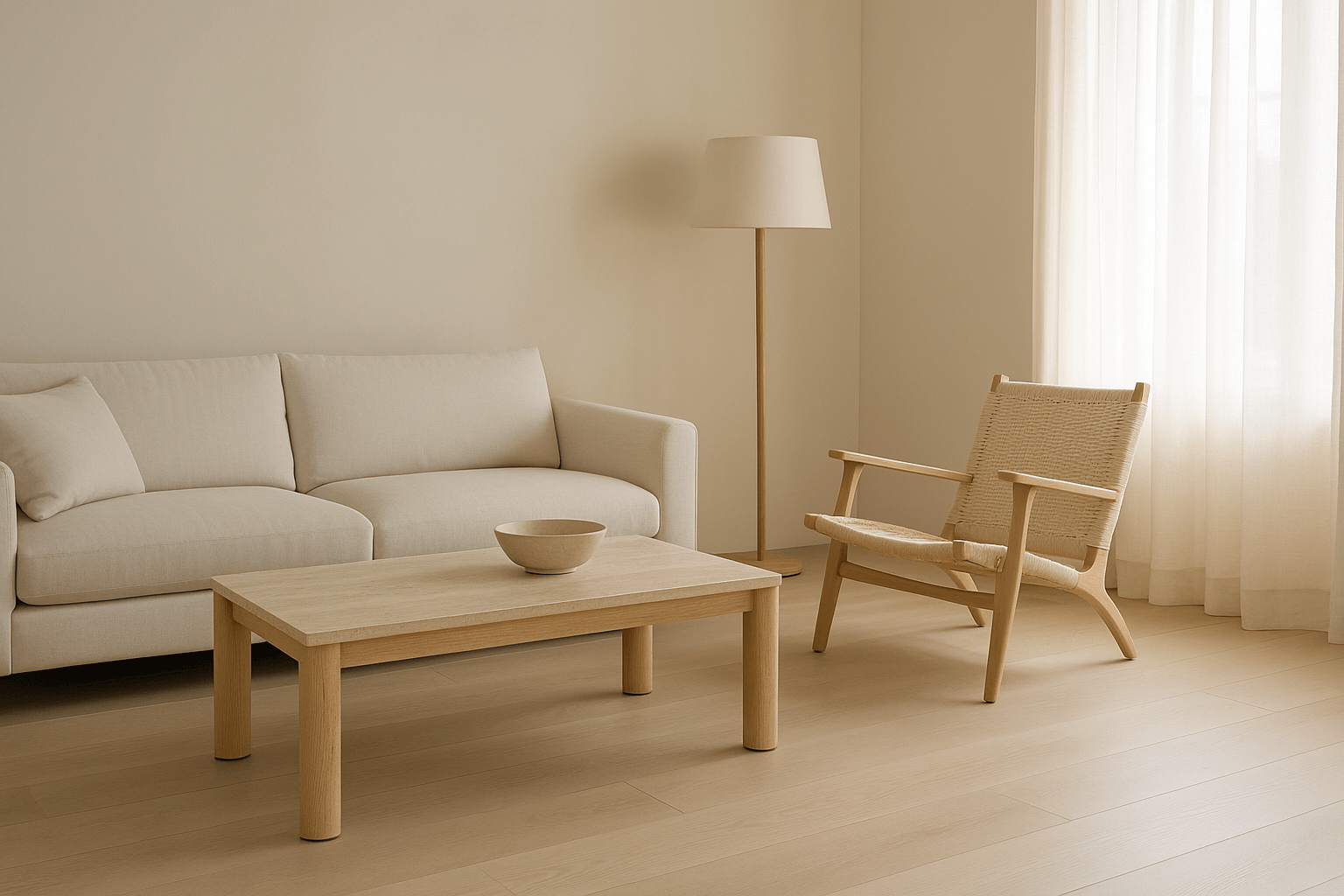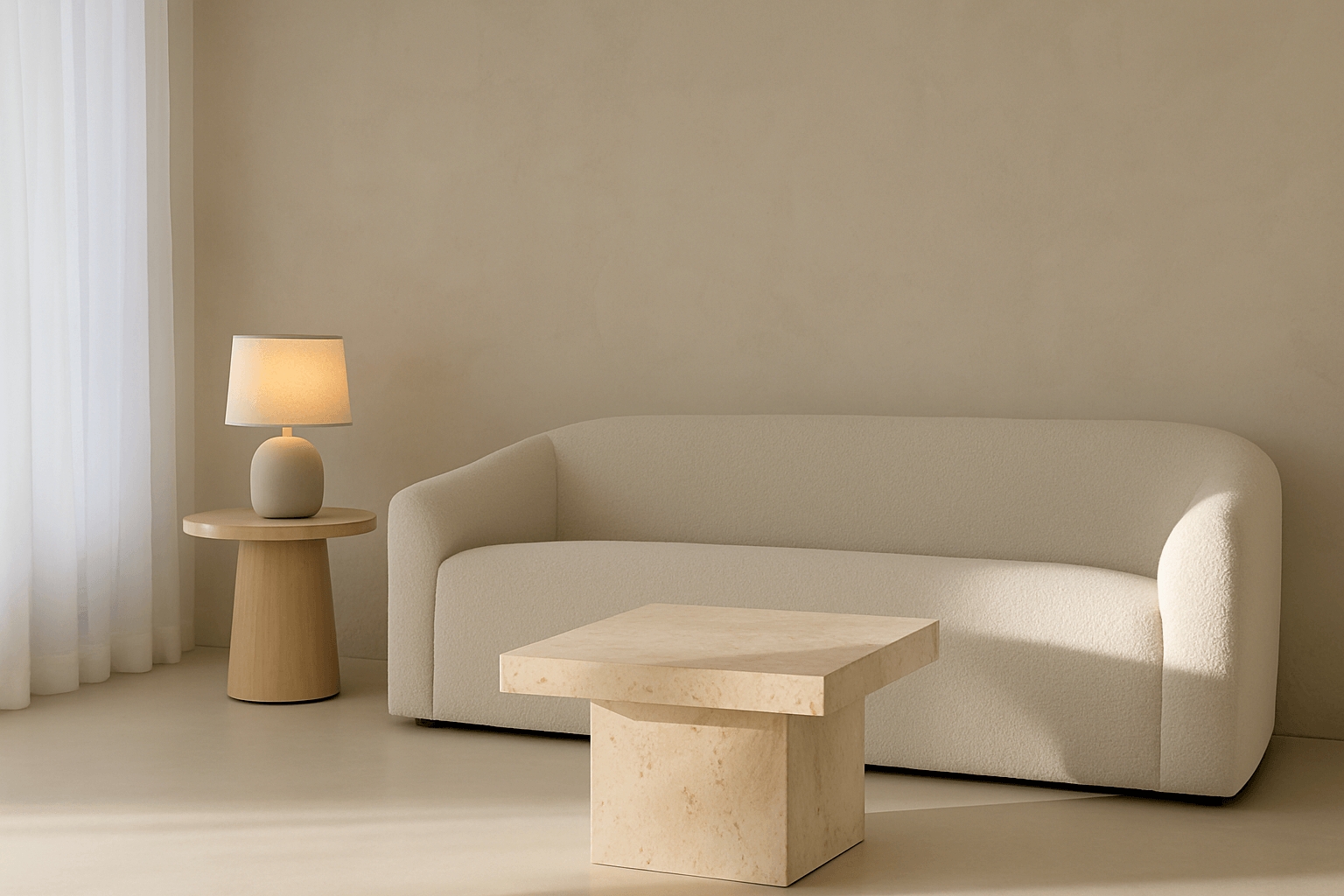Why Texture Matters in Minimalism
In pared-down spaces, every detail becomes more noticeable—and more important.
Without loud patterns or bold colors, texture becomes the voice of the room. It brings warmth, variation, and emotional presence without breaking the calm. It invites not just sight, but touch.
Texture makes minimalism feel alive.
What Texture Offers a Minimalist Home
-
Softens visual flatness
-
Adds sensory richness
-
Balances structure with softness
-
Evokes presence through material honesty
Texture isn’t extra—it’s essential when visual restraint is at play.
How to Layer Texture in a Minimalist Space
1. Start with Natural Materials
Linen, stone, raw wood, paper, unglazed ceramics—these bring authentic, tactile variation without visual noise.
2. Use One Palette, Many Finishes
Stick to a soft, tonal range (e.g., creams, stone, warm greys), but vary how they’re expressed: matte walls, woven rugs, brushed metal, soft boucle.
3. Combine Soft and Hard
Pair a coarse jute rug with a smooth travertine table. A crisp linen couch with a clay lamp. Contrast in feel adds emotional depth.
4. Think Layered, Not Stacked
Instead of crowding with décor, layer textures into surfaces: a single folded throw, a handmade bowl, a bare branch. Simplicity doesn’t mean surface-level.
5. Let Light Reveal Texture
Use soft lighting to draw out shadow and dimension. Texture becomes most beautiful when it catches light gently.
Common Mistakes
-
Too much uniformity: When everything is smooth, the space can feel sterile.
-
Over-decorating with texture: Layering too many textured items clutters instead of calms.
-
Ignoring the floor: A quiet rug or matte floor surface adds grounding texture at eye level and below.
Final Thoughts
In minimalist interiors, texture becomes the emotion. It speaks softly. It supports presence. It turns a quiet room into a felt experience.
Design with your hands as much as your eyes. Let your home be a place you don’t just look at—but feel.
















